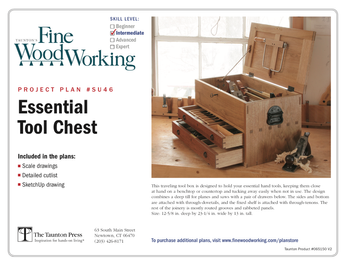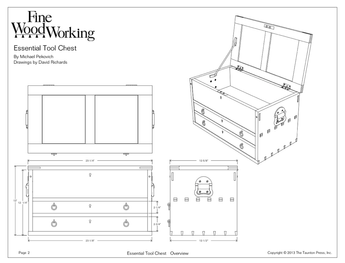Not sure if this is the right folder, but I thought I would give it a try.
I am making a bed frame out of birch and leaving it natural in color. All of the wood is not free except one end where there is a not that is about the size of a dime. All though it doesn’t affect the structural integrity, it is an eye sore(to mee at least) Any thoughts on repairing or fixing?















Replies
Get another peice of birch that doesn't have any knots in it?
Depending on its location, how about doing some inlay - a stem and leaf pattern, perhaps, that would cover the knot?
Or, replace it with a knot-free board?
Making an invisible patch is difficult and you will always see it, even if nobody else can.
One fix: make a decorative patch in a heart or diamond shape, or whatever suits your fancy, out of 1/4" thick stock and glue it over the knot, no need to inlay it. Now make some more patches in the same shape and glue them in the same relative positions on the other ends of the sides, and maybe in a symmetrical spacing in between, so that they look like an intentional design detail. If you really want to make a statement use a contrasting wood so the patches really stand out.
John White
Shop Manager for FWW Magazine, 1998-2007
Kaleo,
it is an eye sore(to mee at least)
Yup and no matter what ye do it always will be, to you. So what? I'll bet you'll be the only one too. And, the more you mess with it the worse it will get too, for you anyway.
So, ye got two choices as I see it, well maybe three. Patch it, leave it alone or replace the board.
Aren't I helpful,
Bob @ Kidderville Acres
A Woodworkers mind should be the sharpest tool in the shop!
You should let us see a picture as it is quite easy to rout and fit a suitable shaped piece in place of the knot. The more swirly the grain the better. Some woods are better suited for this and if done well nothing but the closest inspection will reveal it even if you do know what you are looking for.
Just to add to what others have said. Close inspection will always reveal the flaw to you. A really good patch or disquise will help avoid the casual observer from noticing, BUT anything less than "really good" can actually be more objectionable that having a knot, which after all is a natural feature and not a specific sign of poor workmanship. The only choice that avoids all these issues is to replace the board with clear lumber.
Kaleo,
Aside from replacing the knotted piece with a clear board, you could either color in the knot or inlay a patch into it.
What probably makes the knot stand out is that it is darker than the wood surrounding it. You can color over such areas with oil based or acrylic paint before the final finishing coats go on. From a distance, such repairs, if done well, reduce the eye's tendency to go to that one dark spot. Judicious hanging of bedding over the area will help conceal it, too.
To inlay a patch (known as using a "dutchman"), cut a diamond-shaped piece of wood of similar grain, about a quarter inch thick, that will cover the entirety of the knot. Bevel the edges of the patch slightly so the patch is a tiny bit narrower on the bottom than on the top.
Hold the patch over the knot as you trace around it with a sharp marking knife. Deepen the knife marks and then rout out the interior of the recess where the patch will go.
When the hole has been cleanly excavated, dab a bit of glue on the bottom and edges of the patch and clamp it into place overnight. The slight beveling of the patch's edges ensures a tight fit all the way around.
When the glue is dry, plane and sand the patch flush with the surface. Finish the bed and you're done..
Zolton
If you see a possum running around in here, kill it. It's not a pet. - Jackie Moon
If one has a plug cutter the size (are just a bit larger), one could drill out the knot and install a plug of matching wood. Try to match the grain around the knot AND the plug. Sand smooth, and knot will be "gone".
Using a plug cutter will almost guarantee a visible repair- which is what needs to be avoided.
A router with small diameter straight cutter, a disc sander or edge sanding machine and the availability of other timber from which to select either a sound knot or as in the OP's case , matching timber is needed. Then you plant the new wood or knot, shaped with sander, to suit the grain pattern or figure into the hole made with the router. The plant is made before the hole. Very easy.Philip Marcou
I know you said that you didn't like the knot... But I saw something interesting in a gallery the other day. There was a piece that had a knot right in the center of it that was filled with a blue material. I asked the guy who owned the gallery what it was and he said that it was the offcuts from a gemstone cutter. I guess the guy who made it had bought this stuff (it was like the jewelers version of sawdust... Gemdust????) and then mixed it with an epoxy and filled the hole. The gallery owner said that you can get it really cheap and it comes in any color that gemstones (real or fake) come in. So that could be an option. If you can't make it disappear why not accentuate it and make it really obvious? anyways just my two cents.
Nick
This forum post is now archived. Commenting has been disabled